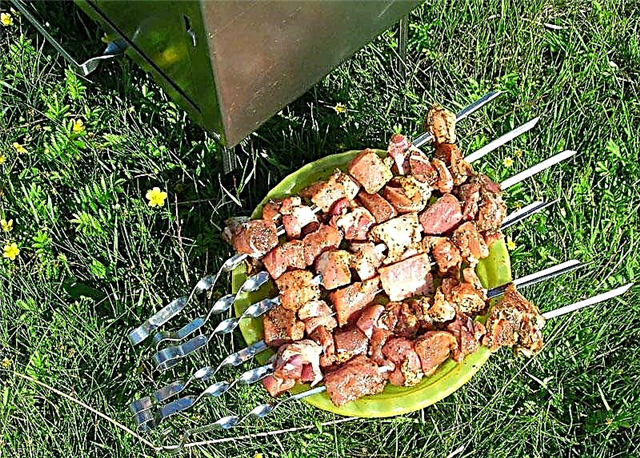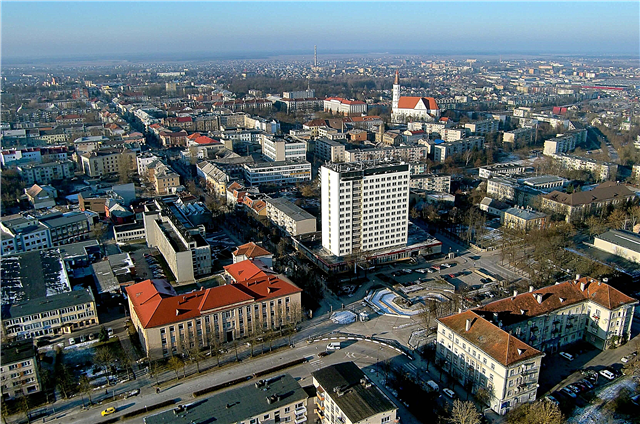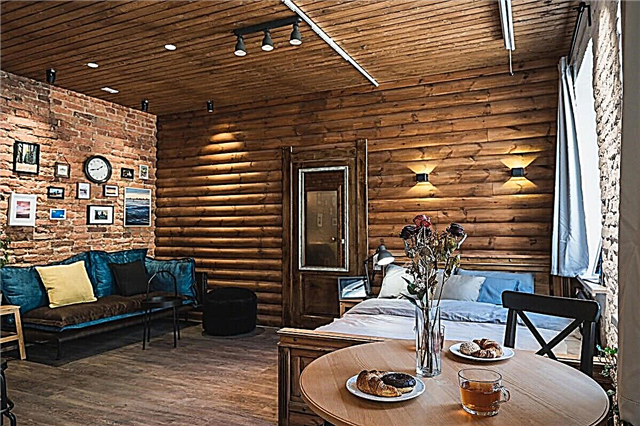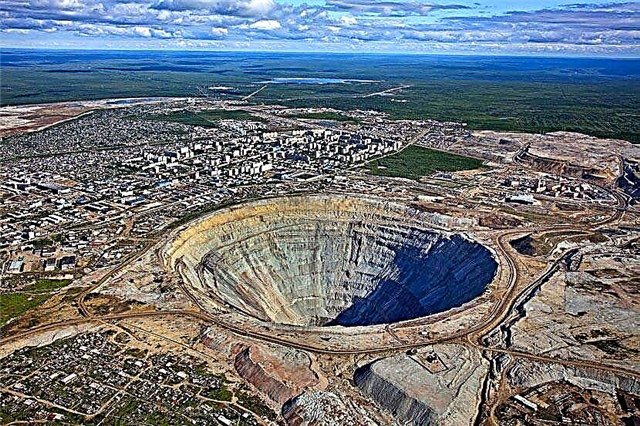Yakutia is a wild and unique in its beauty northern region. Cold winter very quickly turns into hot summer and vice versa, and semitones - spring or autumn - are simply absent here. Yakutia is rich in its unique history, inexhaustible natural resources, unique landscapes. Somewhere along the endless tundra, the shadows of long-extinct mammoths slowly wander, the majestic Lena Pillars stand along the banks of the mighty Lena, and a real desert stretches out next to the centuries-old permafrost.
Enchanting pristine nature, national cuisine, original culture, fascinating historical excursions can leave indelible impressions of this harsh but hospitable land - an ideal world for those who are fascinated by the romance of travel.
The most interesting and beautiful places in Yakutia
List, photo with names and descriptions of popular attractions of the Region
Pole of cold Oymyakon
The Oymyakon depression in Yakutia is one of the harshest places on the planet, claiming to be the coldest in the northern hemisphere. The temperature here in winter reaches -60˚С and below, and in summer it can rise to + 30 ° С. Thus, the annual temperature range is 100˚С, and sometimes even higher! Oymyakon is the name of the region, which includes several settlements, where, despite the harsh climatic conditions, people live.

Lena Pillars
The Lena Pillars are called a series of majestic cliffs of various shapes that rise along the Lena River for over 40 km. Their age is 400 thousand years, they are formed mainly of limestone rocks. Picturesque natural pillars, as well as the adjacent territories, form the national reserve of the same name. In addition to mountain formations, it is famous for a wide variety of flora and fauna, many of which are listed in the Red Book.

Mir kimberlite pipe
The world's largest diamond quarry was discovered by geologists in the 50s of the last century. The kimberlite pipe has the shape of a funnel, its depth is about 500 meters, and its diameter at the top is more than a kilometer. Until the early 2000s, rough diamonds worth $ 17 billion were recovered from the pipe. However, since 2001, the mining of minerals by open pit mining has ceased due to the danger and inefficiency of this method. All work was transferred to underground mines.

Sinsky pillars
These vertical cliffs up to 100 meters high are located not far from the famous Lena Pillars. They stretch for 80 km along the bank of the Sinyaya River, one of the tributaries of the Lena. They are not as famous as the Lenskys, but they are in no way inferior to them in beauty. The age of the limestone pillars, according to rough estimates, is about 400 thousand years. During this time, rains, wind and water flowing from the peaks have created intricate forms of rocks, reminiscent of towers, arches, stone bridges and palaces.

Kisilyakh mountains
Unique pillar-forming rocks, reminiscent from a distance of giant silhouettes of people, stretched for almost three tens of kilometers. It is hard to believe that their forms are miraculous and created only by water, wind and temperature changes. This is a sacred territory for local residents, until recently women and children were not even allowed to look towards the mountains. In terms of their mystery, Kisilyakh are on a par with Stonehenge and the Egyptian pyramids.

Buluus glacier
A real miracle of nature in the Yakutsk Territory. A huge glacier with an area of more than 1000 hectares is formed by underground sources of clean fresh water. In some places, the ice is more than 3 meters thick. In summer, when the temperature reaches +30°From and above, cavities and tunnels are formed in the glacier, similar to an intricate labyrinth. The water of the Buluus spring is of very high quality and contains all the microelements necessary for the human body. The glacier territory has been declared a nature reserve.

Dunes of Tukulana
The 100-meter-long Yakut sand dunes, towering in the middle of the taiga, although they have temperatures above + 40 ° C on their ridges in summer, as in the Sahara, are still different from the deserts of southern latitudes. You will not die of thirst in them - the dunes are surrounded by rivers, swamps, lakes rich in fish. Permafrost prevents water from penetrating deep down. There is also vegetation near the water. Pine, spruce, larch, birch, lingonberry, and cranberries grow in the Tukulanov region. Animals also live here.

Kuruluur waterfall
There is a waterfall 80 km from Yakutsk on the Mende River. The waterfall itself is small, but the surrounding nature - a dense forest, fresh air, a transparent river with numerous rifts, unusual layered rocks - is simply mesmerizing. This is one of the most favorite vacation spots for locals. Here you can swim, there is an excellent sandy beach, many benches, gazebos, barbecues. There is an opportunity to go fishing and immediately cook the caught catch on the fire.

Turuuk Haya
A gigantic monument, created over many centuries by nature itself. One of the most popular tourist attractions in the Yakut region. A huge rock of mountain limestone rises alone in the middle of the Samartai valley. You can climb to the surface along a natural crack inside the rock. And from the top, breathtaking landscapes open up - a dense pine forest spread out below, the beautiful river Lyutenga flowing at the foot of the mountain, one of the tributaries of the Lena.

Kingdom of permafrost
Excursions to the bewitching kingdom of cold and ice are incredibly popular with tourists. A complex of several halls, arches, corridors with original illumination is located in a glacial cave in the center of the mountain, where temperatures remain below freezing all year round. All objects in the cave are made of ice - figures of animals, people, pieces of furniture, tableware, decorations, whole sculptural compositions. The museum also has a paleontological collection of the remains of Ice Age animals.

Ust-Lensky Nature Reserve
One of the largest reserves in the country has an area of about 1400 thousand hectares. Most of its territory is located in the Lena River delta, one tenth is occupied by the Kharaulakh Mountains. Many waterfowl nest in the reserve, as well as rare predators - golden eagle, gyrfalcon, merlin, peregrine falcon. Aboriginal animals include polar bears, wolves, reindeers, and lemmings. Brown bears, wolverines, muskrats, lynxes, etc. regularly visit these places.

Kolyma highway
One of the main roads of the Far East has a length of more than 2 thousand km and connects two regions - Magadan and Yakutsk. Most of it passes through the Yakut land. The construction of the road began in the 30s of the last century, simultaneously with the development of the mining industry in the region, and lasted for 20 years. The Kolyma tract is often called the road on "bones" for its complexity and numerous sacrifices during its construction.

Natural park Momsky
One of the six nature conservation parks in Yakutia was organized in 1996 in the Moma river valley. There are several interesting sights on its territory. Among them is Mount Pobeda, the highest peak in the northeastern region of Siberia, and Mramornaya Mountain, a large marble deposit. Extinct volcanoes and a lake with non-freezing water even at -60˚C. More than a hundred glaciers on the tops of the mountains and the largest ice ice in Russia along the Moma River.

Ulakhan-Sis
An incredible miracle of nature - a stone city made of outlier rocks in polar Yakutia. On a hill between the Indigirka and Alazeya rivers, right in the middle of the tundra, there is a chain of giant stone statues, single and group, of various shapes and sizes.Looking at them, it is hard to believe that only nature acted as the sculptor of these structures - water, wind, low temperatures. And the material for creating natural sculptures was granite and rocks close to it.

Lake Labynkyr
The legendary picturesque lake in the east of Yakutia has a bad reputation. For hundreds of years, local residents have been passing on from generation to generation the legend about a huge and bloodthirsty monster living at the bottom of the lake, they call it the Labynkyr Devil. Therefore, the lake is located in a deserted place, no roads lead to it, the nearest settlement is located 150 km from it. And even despite the wide variety of fish living in the reservoir, local fishermen prefer to bypass it.

Olekminsky reserve
The name of the nature reserve, founded in 1984, comes from the name of the Lena tributary - the Olekma River, which flows in this area. The area of the reserve is about 800 thousand hectares, and most of it is occupied by deciduous and, slightly less often, coniferous forests. Many taiga birds have found refuge in the protected area, and more recently, some southern species of birds - swift, chaffinch, quail. The fauna is represented by red deer, brown bear, wolf, wild reindeer, etc.

Museum-reserve "Friendship" in Sottintsy
The architectural and ethnographic complex 50 km from Yakutsk introduces the history of the reunification of Yakutia and the Russian Empire and Russian influence on the national life and culture. Monuments and structures have been recreated on the territory of the museum; the age of the most ancient is about 300 years. This is a wooden Russian fortress with towers, a copy of the Zashiversky prison church, merchant houses, barns, a mill, a wooden Cossack ship, summer and winter Yakut dwellings, a national cemetery, etc.

Museum and center of the khomus of the peoples of the world
Since 1990, the only museum in the world has been operating in Yakutsk, entirely dedicated to the khomus, a reed musical instrument. The exhibits of the four museum halls are unique. Here you can see khomuses from different countries - England, Italy, Hungary, France, etc. In total, 162 varieties of this instrument are known. A special place is occupied by the khomuses of Yakutia, each of them deserves to be called a real work of art. There is even one instance that has visited the space station.

Mammoth Museum in Yakutsk
The paleontological finds presented at the Yakut mammoth research center have no analogues in the whole world. In total, about 1500 unique objects are kept here, and all of them are the national treasure of Yakutia. Among the exhibits are skulls, bones, tusks, skins not only of mammoths, but also of other relict animals. The mummies of a baby bison and a calf, the approximate age of which is estimated at 8-9 thousand years, as well as a copy of a mammoth named Dima, are famous.

Death Valley (Elyuyu Cherkechekh)
This is an anomalous mysterious area in the area of the Vilyui River. Its origin is associated with the fall of the Tunguska meteorite at the beginning of the last century. Local hunters called it the Valley of Death. They were the first to find here metal objects sticking out of the ground, and used them for sleeping. Soon, everyone who touched the plate-shaped structures called cauldrons was dying. They are supposed to emit radiation. There are many versions of the appearance of boilers in the valley, all of them have not yet been confirmed.

Batagayka
A deep depression in the Verkhoyansk region was formed in the 60s of the last century after the cutting of the taiga area, as a result of which the soil subsided and the layers of permafrost were exposed. In subsequent years, the crater continued to grow, increasing annually by about 15 meters. Currently, the cleft in the ground is 1 km long and 800 meters wide, and goes 100 meters deep. On the slopes of the gorge, geological layers of different eras are clearly visible, giving an idea of the past of our planet.

Pleistocene park
In the sanctuary in the north of Yakutia, a grandiose scientific experiment is being carried out to create conditions for the joint habitation of mammals of the mammoth fauna - horses, bison, camels, large cats, deer, musk oxen, bears. Tens of thousands of years ago, they lived together in Eurasia and North America and were part of a large terrestrial ecosystem. The goal of the experiment is to restore this ecosystem, which is much more productive than modern taiga and tundra.

Deering-Yuryakh
In the 80s of the last century, scientists discovered the remains of an ancient settlement on the banks of the Lena River. Its age is 2-3 million years. It was an amazing scientific sensation, since it was previously believed that people appeared in this area only 40-35 thousand years ago, and only the equatorial tropics of East Africa were recognized as the cradle of all mankind. During the excavations at the site, more than 4,000 stone artifacts were found.

Yakutsk zoo "Orto-Doydu"
The small zoo, located in a beautiful place - the Ercani Valley, is unique for two reasons. It is the only one in the world located in such harsh climatic conditions. And also the zoo is a center of mercy for the wounded, orphaned, sick animals. They all receive medical and nurturing care here. And then they are either released back into the wild, or left to live in the zoo. Now 180 species of animals live here, there is even an exotarium.

National Art Museum of the Republic of Sakha
The art museum began in the 20s of the last century from a small art hall, which received three dozen works of famous Russian painters as a gift from the Tretyakov Gallery. In the 50s, the museum received a collection of works of art from the peoples of the East - items made of bronze, porcelain, bones, Japanese netsuke. The main place is occupied by a collection of Yakut art - painting, sculptural compositions, folk crafts, graphics of past centuries and the present.

Treasury of the Sakha Republic
In several halls of this truly fabulous museum, a variety of precious stones, diamonds, bars of gold and platinum, jewelry and products made from mammoth bones are collected. All these are priceless riches of the Yakut land. A separate room is dedicated to industrial mining and stage-by-stage processing of precious stones, manual and serial. The collection of exclusive items is represented by old coins, nuggets of the most bizarre shapes, large diamonds, etc.

Verkhoyansk ridge
One of the largest mountain systems in northeastern Asia, its length along the Lena is 1200 km, and its width in different areas varies from 100 to 250 km. The height of the ridge peaks reaches 2000 meters. The mountains consist mainly of sandstone, shale, limestone. Deposits of gold, silver, and tin were found here. In one of the hollows of the ridge, there is a village that claims to be the Pole of Cold, and there is a cave of the Yakut Father Frost.

Mount Harama
The low mountain Harama on the coast of the Amga River and its surroundings has been declared a nature conservation area. For local residents, this mountain is sacred, many myths and legends are associated with it. And it got its name in honor of the pagan name of the great Yakut shaman, who is considered the mistress and guardian of the mountain. The main feature of this place is the face of a girl showing through on the slope of the cliff. Sometimes she is sad, sometimes she smiles, and sometimes her image disappears altogether.

Shergin mine
A unique object more than 100 meters deep in Yakutsk has played a significant role in the development of science, in particular, permafrost. The well was dug in the first half of the 19th century by the merchant Shergin in the courtyard of his house in search of drinking water. He never received water, but thermometers were installed at different levels, showing the temperature of the rocks. And later the well was used as a laboratory for studying permafrost. The mine is included in the list of protected monuments of Yakutia.

Ethnographic complex "Chochur-Muran"
The Chochur-Muran hill on the banks of the Lena River is considered the cradle of the Yakut people; it is a popular resting place among local residents. At the foot of the hill there is a complex of the same name. It consists of wooden structures with an original interior and various themes. There is a merchant's house of the 19th century, a barn, a hunter's house with trophies, dwellings of the Turkic peoples - a yurt and a booth. Animals and birds live on the territory of the complex, a nursery for Yakut Laikas has been created.












